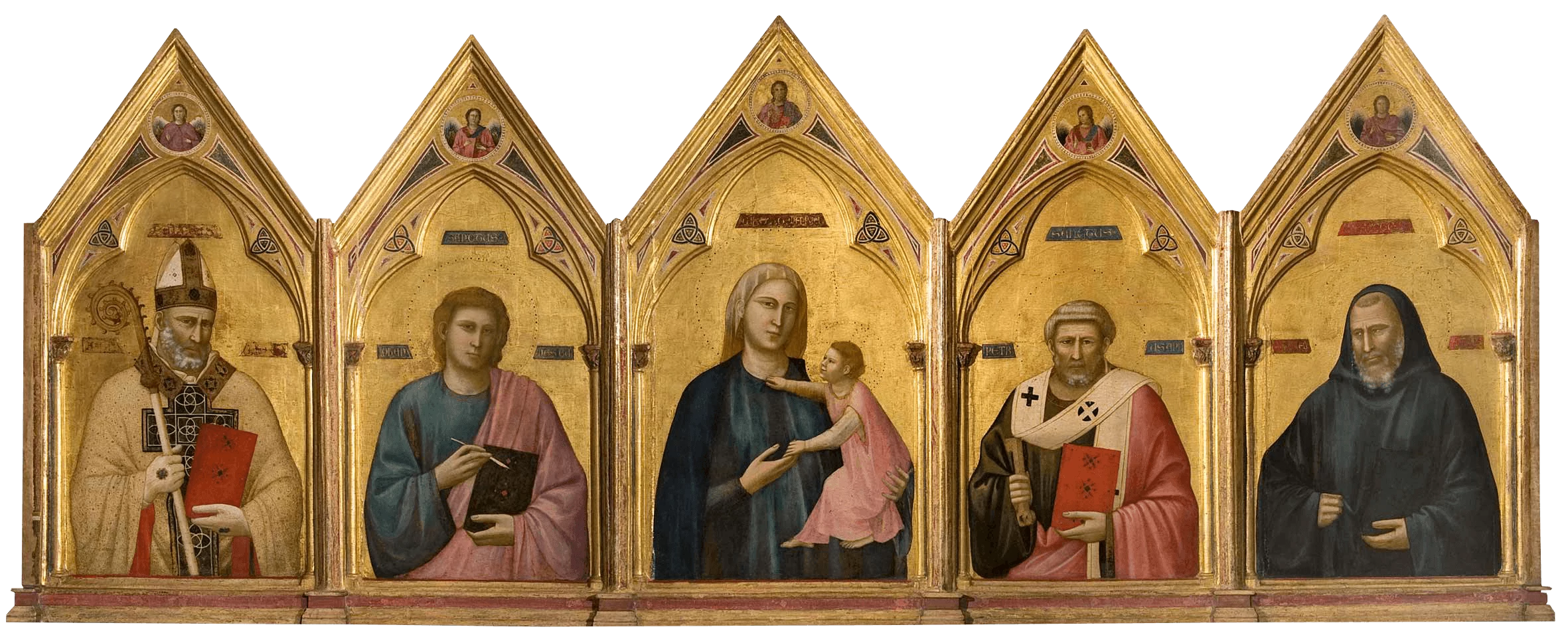
Badia Polyptych Giotto di Bondone, 1300
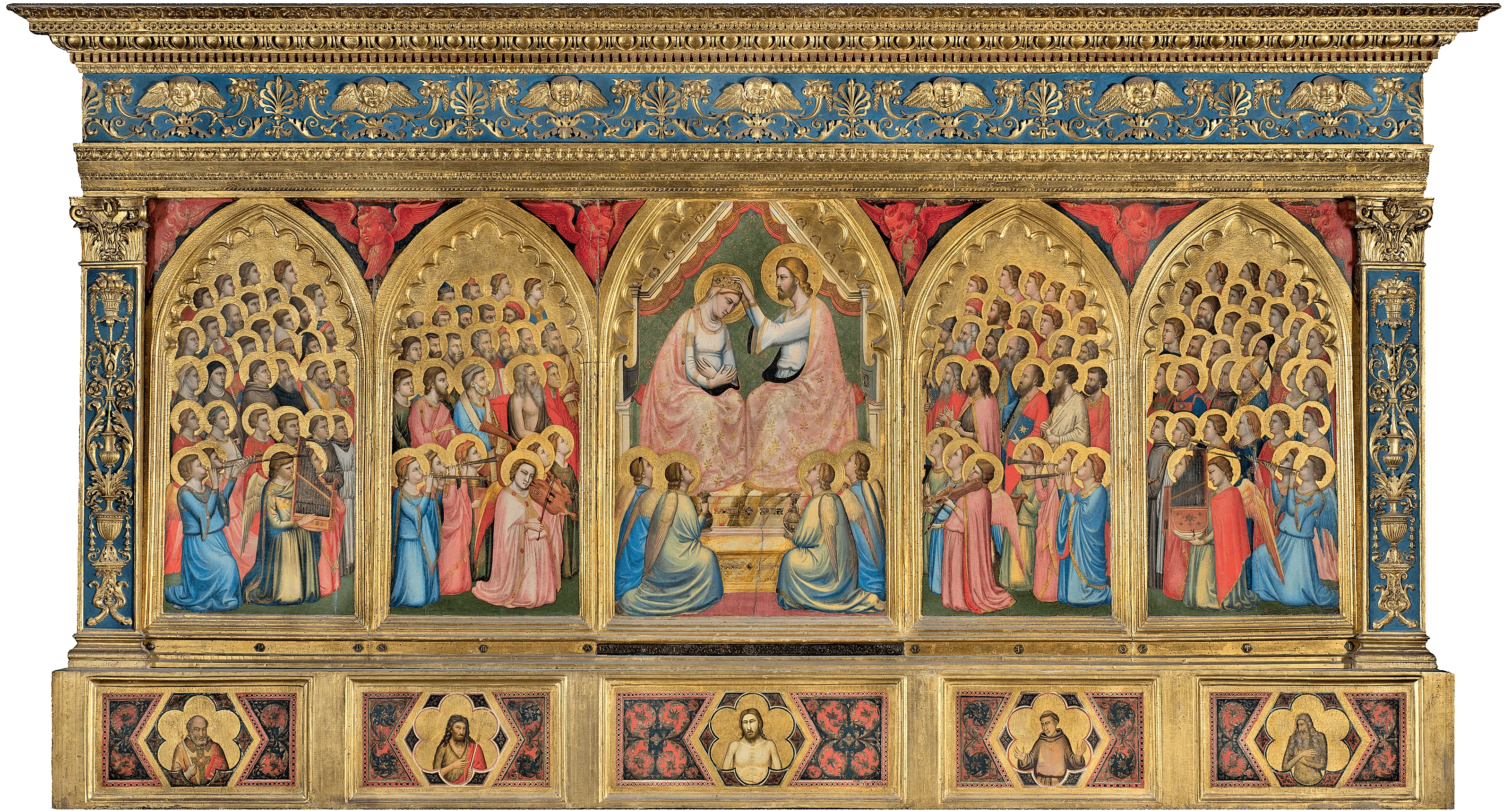
Baroncelli Polyptych Giotto di Bondone, 1334
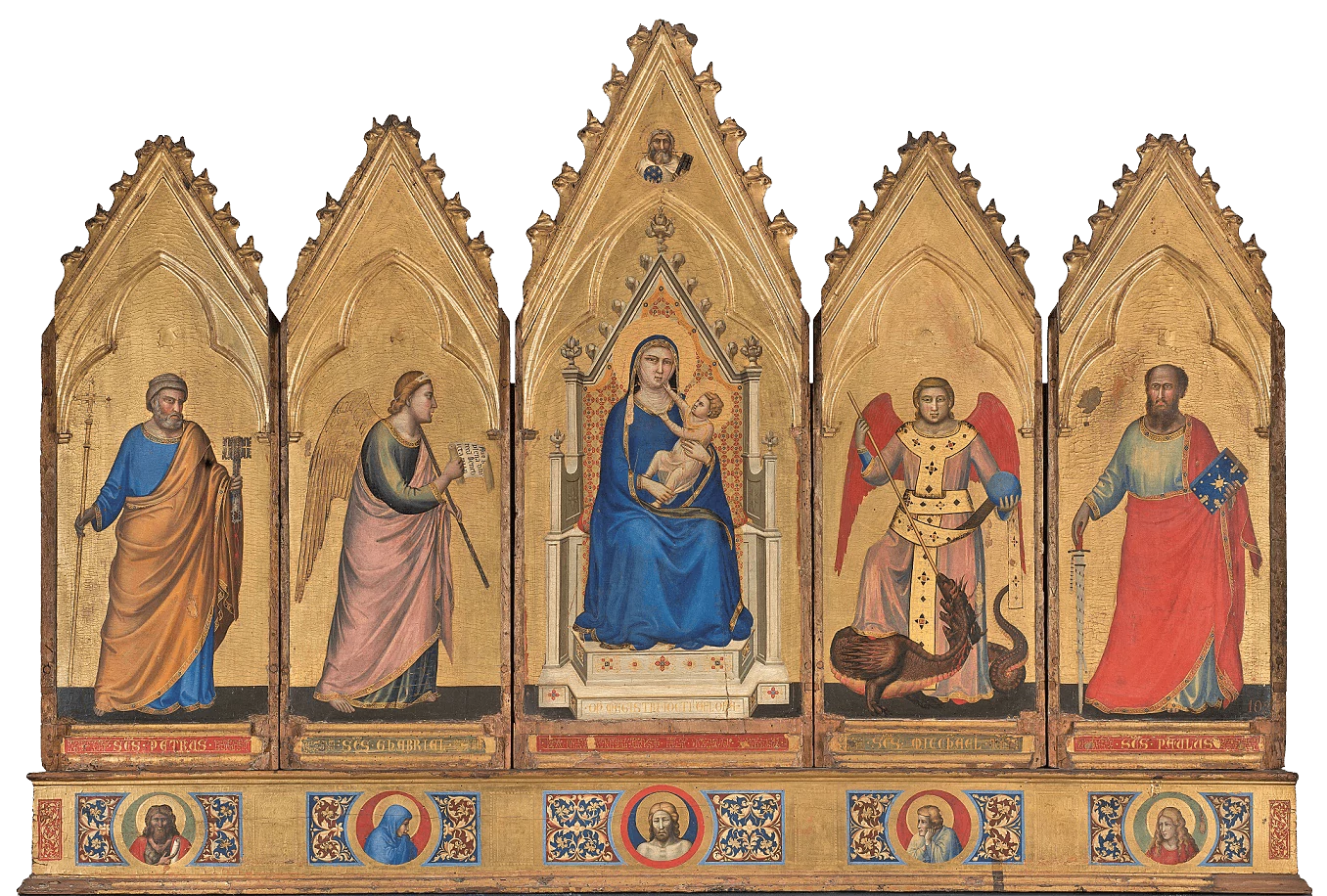
Polyptych of Bologna Giotto di Bondone, 1330 – 1335
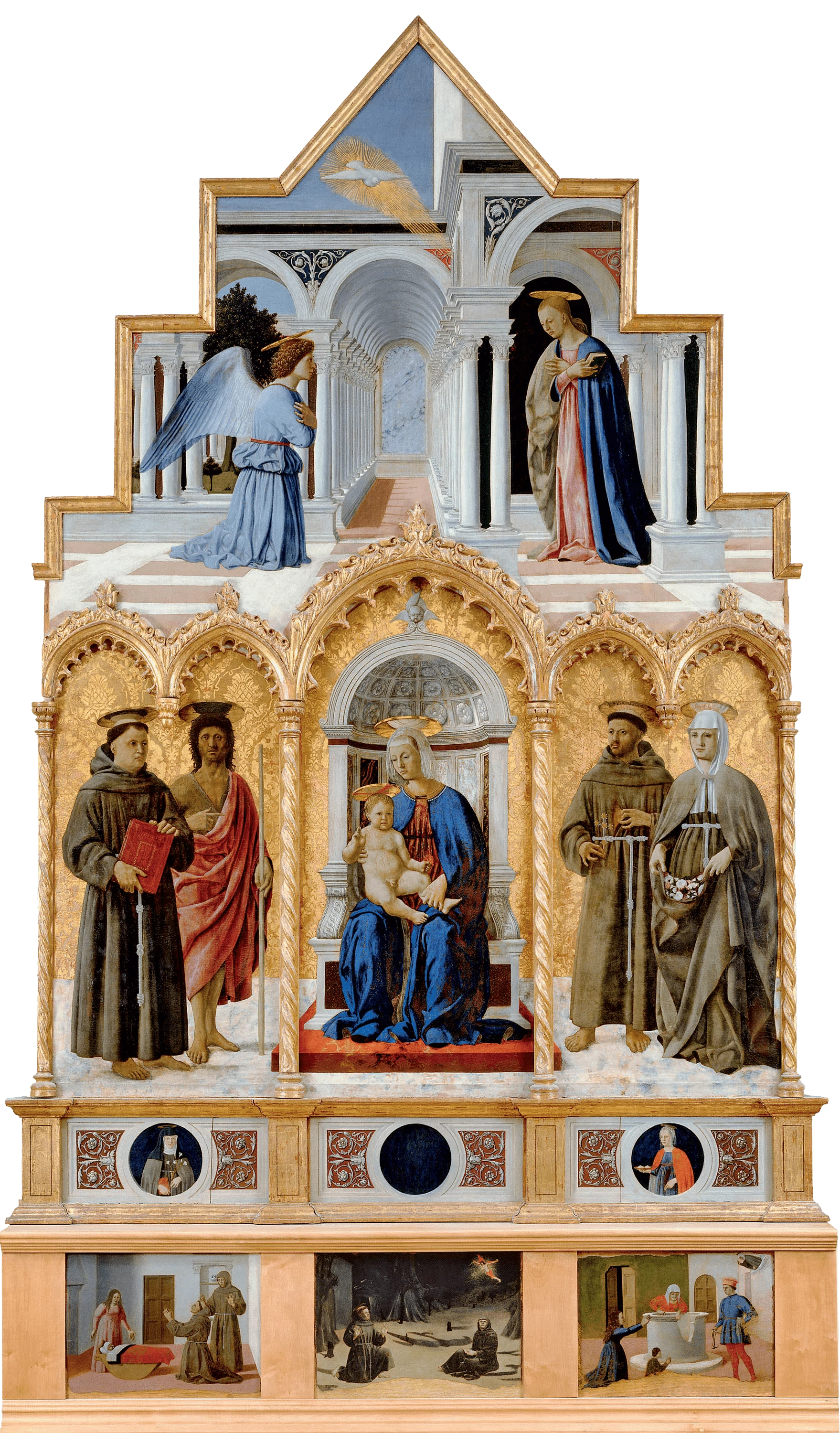
Polyptych of Perugia Piero della Francesca, 1470
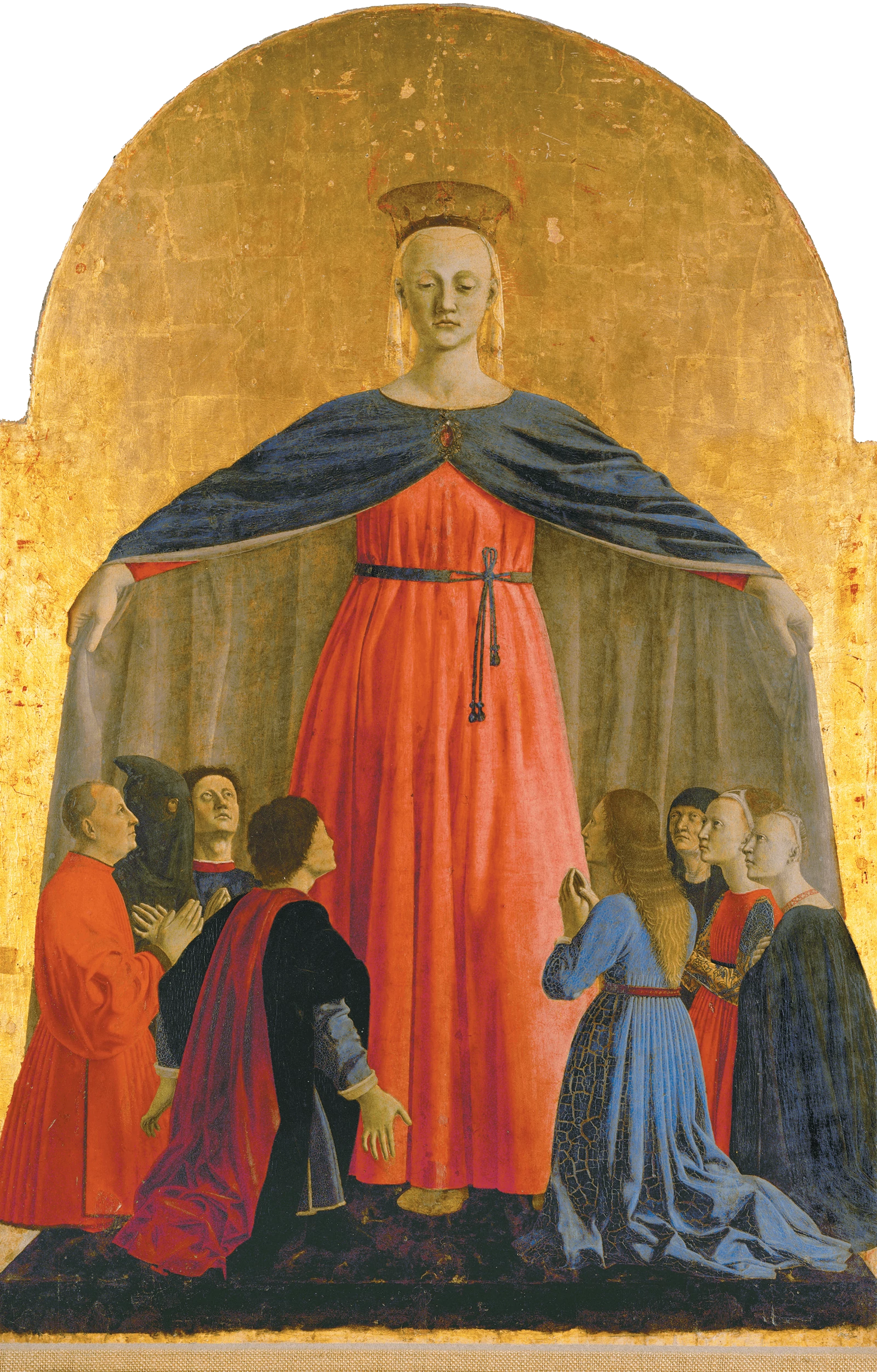
A diptych is an artwork made of two separate but connected panels. A triptych is the same, but with three panels. More complex ones with four, five or even dozens of connected panels are called polyptychs, from the Greek words “poly-” meaning many and “ptychē” meaning fold. Polyptychs were popular in the early Renaissance, and typically showcased religious scenes in a large central panel, with depictions of saints or benefactors on wings, smaller panels to each side. Polyptychs were often used as altarpieces in Christian churches and cathedrals, and sometimes were designed to close, protecting the inner artwork when not on display during service.




